

Investigative reporter Gary Cohen recently appeared on radio station KPFK’s David Feldman Show to discuss the strange liaison between the Pew Charitable Trusts and the libertarian Laura and John Arnold Foundation. Cohn had written a piece for Frying Pan News linking the respected research organization with the public-pension-cutting agenda of John Arnold, a billionaire hedge-funder. Cohn also broke a story about a proposed state ballot initiative that would change California’s constitution in favor of gutting the retirement plans of state and municipal employees.
Listen here to a segment of Feldman’s show for a quick rundown of the Pew-Arnold alliance and what’s behind the move to cut funding for public pensions.
» Read more about: Radio: Gary Cohn Explains Pew-Arnold Alliance »


One by one, like guests at a late party
They shake our hands and step into the dark:
Arabian ostrich; Long-eared kit fox; Mysterious starling.
One by one, like sheep counted to close our eyes,
They leap the fence and disappear into the woods:
Atlas bear; Passenger pigeon; North Island laughing owl;
Great auk; Dodo; Eastern wapiti; Badlands bighorn sheep.
One by one, like grade school friends,
They move away and fade out of memory:
Portuguese ibex; Blue buck; Auroch; Oregon bison;
Spanish imperial eagle; Japanese wolf; Hawksbill
Sea turtle; Cape lion; Heath hen; Raiatea thrush.
One by one, like children at a fire drill,


“Can Google Solve Death?” read the cover headline of a national news weekly. It cleverly enticed readers to read the story inside. The question also represents one of the major problems facing human beings. No, not death, but hubris.
Hubris was one of the themes of the great Greek tragedies in the fifth century before the Common Era. The Greek playwrights like Aeschylus, Euripides and Sophocles understood all too well the capacity of humans to extend themselves beyond their ability to limit the damage caused by their actions.
So great families disintegrated, monarchs fell and society itself came close to collapse – all because people in power could not stop themselves from reaching beyond their limitations as human beings. We do the same, but in new ways with unknown consequences.
Global climate change comes instantly to mind. Last spring, for the first time in human history,


Jam-Up on the Cat-Oh-Five
We live in LA, city of traffic jams on the 405 and other freeways.
One recent morning we had three cats bunched up on the patio outside our cat door.
Elise’s traffic report: “It’s a jam-up on the cat-oh-five!”
Rearview Mirror Tableau on Highway 5 South
She’s passenger. He’s driving.
Her face is angry and she speaks quickly.
She leans away from him. He leans toward her.
Rough Beauty
Hills driving north from L.A. on the 5 freeway display a rough beauty:
Mustard yellow, splotched with tufts of scraggly live oaks;
Hunched against drifty white clouds; skinned shoulders rust veined.
—————————————————————————————————————————-
Jeff Rogers has posted hundreds of poems in the “Three Line Lunch” series at www.fierceandnerdy.com,


Not long ago I was walking toward an airport departure gate when a man approached me.
“Are you Robert Reich?” he asked.
“Yes,” I said.
“You’re a Commie dirtbag.” (He actually used a variant of that noun, one that can’t be printed here.)
“I’m sorry?” I thought I had misunderstood him.
“You’re a Commie dirtbag.”
My mind raced through several possibilities. Was I in danger? That seemed doubtful. He was well-dressed and had a briefcase in one hand. He couldn’t have gotten through the checkpoint with a knife or gun. Should I just walk away? Probably. But what if he followed me? Regardless, why should I let him get away with insulting me?
I decided to respond, as civilly as I could: “You’re wrong. Where did you get your information?”
“Fox News. Bill O’Reilly says you’re a Communist.”
A year or so ago Bill O’Reilly did say on his Fox News show that I was a Communist.
» Read more about: I Was a Communist in Bill O’Reilly’s Dreams »




Currently a Research Professor of Education at New York University, Diane Ravitch served as the Assistant Secretary of Education in the George H.W. Bush administration and later worked for Bill Clinton’s White House. A tireless critic of the public school testing standards she once endorsed, the 75-year-old Ravitch remains a clear voice against the stampede into publicly funded charter schools and other right-leaning education “reforms,” including No Child Left Behind and Race to the Top.
Her newest book is Reign of Error: The Hoax of the Privatization Movement and the Danger to America’s Public Schools. Tonight and tomorrow night she will speak at two Southland colleges as part of her book tour.
Tuesday, October 1, 7 p.m.
Thorne Hall. Occidental College
1600 Campus Road, Los Angeles
(323) 259-2991
Free.
Wednesday, October 2, 7 p.m.
Student Union,California State University
18111 Nordhoff St.,
» Read more about: Diane Ravitch Speaks at Two Southland Colleges »
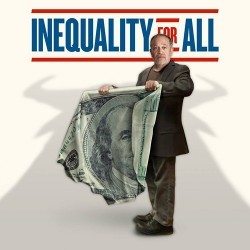
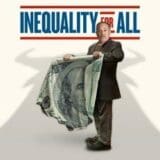
With the release of the documentary Inequality for All, the core progressive story about what is wrong with the economy is now on the silver screen. For those of us who have been working to articulate what we call a progressive economic narrative, it is a major milestone.
The right spent decades projecting their view that prosperity is created through limited government and free markets, concepts that still dominate most Americans’ thinking, even as the American dream is becoming a nightmare for more and more families. The new movie provides a powerful way to popularize a very different story.
Inequality for All is based around a big lecture course that Robert Reich gives at the University of California Berkeley. Reich and the film’s director, Jacob Kornbluth, mix facts, infographics, documentary footage and profiles of families whose lives have been scarred by the new economy with the personal story of Reich’s lifelong work to push for a just economy,


for at least an hour. Maybe longer. It was longer.
No one spoke, looked away, or drew attention
with their hands. A few of us opened our mouths,
a few always do. We didn’t know we’d done it.
No one saw. Like losing a button. We were busy
not speaking. We had drinks, a few snacks, watched
TV with the sound off. A few of us thought about
the button, the one that says MUTE, how common
it is now. We tried to imagine it on other things,
things that don’t speak but are loud: lamps, guns,
a fire truck with MUTE painted on it. It would’ve
looked good on us, stenciled white across our chests.
We wore dark colors, earth tones. No one calls them
dirt tones or soil.


My name is Dana Wilson and I am a professional dancer. Whether I am performing with a major recording artist, or busting a move in television and film, it is my job to entertain and evoke emotion through movement. It is also my job to make it look easy.
The reality is, dancers train tirelessly, sacrifice our bodies and dedicate our lives to our work, and sometimes all we get in return is “the experience.” Most of us are young (twenty-somethings) and female. We are all are eager to work and it has taken a long time to gain respect as a work force. We have unions that represent us when we work on television shows and movies, but much of our work is still nonunion and many of us are without health insurance. Meanwhile, our bodies are taking a beating and we are always one injury away from unemployment.
Dancers’ Alliance is an organization formed by dancers and run by dancers to unite us and improve our working conditions.


Social justice activists often think that when things are terrible, people will rise up and protest those conditions until they see significant change, and sometimes they do. But usually, especially in recent decades in this country, they don’t. My friends, as well as other readers of the Frying Pan, often ask, Why not?
I always return to one of the classic analyses of dramatic social change, Crane Brinton’s Anatomy of Revolution. The book follows the trajectory of four historic revolutions: England, France, America and Russia. In each, he argues, regime change did not happen because conditions were at their worst. Instead they occurred when the circumstances of everyday life were actually getting better but did not match the hopes of people. Revolution happened, Brinton says, in the widening gap between expectation and reality.
That explanation probably clarifies why demonstrations in Greece and Spain have met with frustration,
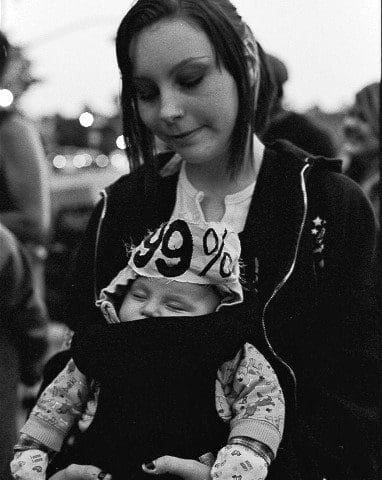

Two years ago the “Occupy” movement roared into view, summoning the energies and attention of large numbers of people who felt the economic system had got out of whack and were determined to do something about it.
Occupy put the issue of the nation’s savage inequality on the front pages, and focused America’s attention on what that inequality was doing to our democracy. To that extent, it was a stirring success.
But Occupy eschewed political organization, discipline, and strategy. It wanted to remain outside politics, and outside any hierarchical structure that might begin to replicate the hierarchies of American society it was opposing.
So when mayors, other public officials, and university administrators cleared the Occupy encampments by force — encampments that had become the symbol of the movement — nothing seemed to remain behind. Some Occupiers made plans for further actions, but a movement without structure, discipline, and strategy proved incapable of sustaining itself.
» Read more about: Occupy Wall Street’s Bittersweet Birthday »

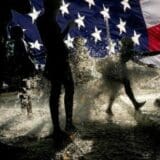
Sunday’s Los Angeles Times carried one of those state-of-the-economy articles indicating that Americans are becoming more realistic in their estimates of their place on the country’s social ladder. Headlined, “Amid slow economic recovery, more Americans identify as ‘lower class,’” Emily Alpert’s feature focused on the latest General Social Survey, a 40-year research project conducted biannually by the National Opinion Research Center (NORC) at the University of Chicago.
The upshot is that fewer low-income people are clinging to the fantasy that they form part of the “middle class” – or even the “working class.” Instead, they are coming to realize that they help comprise the “lower class,” a destination once regarded as an economic leper colony but now accepted as just another fact of life.
As Alpert reports, the GSS revealed that “a record 8.4 percent of Americans put themselves in that category — more than at any other time in the four decades that the question has been asked on the General Social Survey.”
Since the start of the 2009 recession we’ve become acquainted with – almost inured by – metrics showing how high up on the economic pyramid people unreasonably see themselves.
» Read more about: A Touch of Class: Knowing Our Place on the Social Ladder »
Frying Pan News reviewer Vivian Rothstein called Go Public: A Day in the Life of an American School District “an antidote to the doom and gloom pronouncements of Waiting for Superman and other recent corporate-sponsored films.”
This documentary, created by Jim and Dawn O’Keeffe, memorably follows 50 individuals (students, faculty and others) during a single school day. Its filmmakers focus on Pasadena’s public school district as it struggles to head off catastrophic budget cuts to 28 schools. It’s a primer on the importance of public education and how successful it can be with the support of parents and administrators.
The film can be seen in three widely separate local venues this weekend. On Saturday it’s part of the Catalina Film Festival and screens 1-3 p.m. at the Lancer Auditorium in Avalon. Sunday, it shows at Pasadena’s Lake Avenue Church (1-3 p.m.) and at USC’s Ray Stark Family Theater (6-8 p.m.).
» Read more about: ‘Go Public’ School Documentary Screens This Weekend »


Here’s a surprisingly little secret: You know all those dates you see on food products—sell by, use by, best before? Those dates do not indicate the safety of your food, and generally speaking, they’re not regulated.
If this is news for you, you’re not alone. In fact, according to one industry study, 90 percent of Americans at least occasionally throw food away prematurely because they mistakenly interpret the date label to mean their food is unsafe; 25 percent do so every time. In the U.K., they’ve estimated about 20 percent of food wasted in households is due to confusion over expiration dates. If this same estimate were true here, it would mean the average household of four could be spending $275-450 on discarding food that is perfectly fine, just because they misinterpret the label date.
Today, in partnership with the Harvard Food Law and Policy Clinic,
» Read more about: Misleading Food Sell-By Dates: Waste Not, Toss Not! »
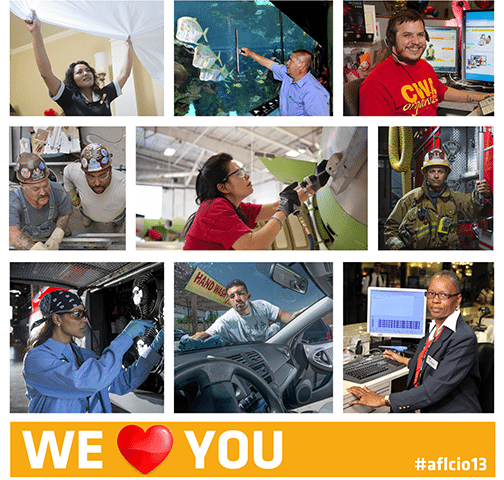

Lazy. Out of touch. Greedy. Self-serving. Thuggish.
Chances are you’ve heard a union member or leader called one of these things (and in all likelihood, more than once), and it made your blood boil. The unfortunate truth is that misconceptions, stereotypes and all-out lies seem to be dominating the public discussion and perception of labor unions, even among some progressives. We in the labor movement know that unions stand for the working class as the sole and vital counterbalance to corporate greed and excess…but no one else seems to have gotten the memo.
That disconnect—between what we actually do and what others think we do—is the impetus behind yesterday’s action session at the AFL-CIO Convention, entitled “10 Ways to Change How People See Unions.” Featuring AFL-CIO Secretary-Treasurer Elizabeth Shuler, AFSCME’s Chris Policano and Brandon Weber of Upworthy’s Workonomics, this exciting session focused on reintroducing unions to America by focusing on what we actually do every day for working families.
» Read more about: 10 Ways to Change How People See Unions »


They wake like cosmetic surgery patients.
Memories of crawling vanish
as the sun warms the body
they could not have dreamed of:
Dog Face,
Provence Chalk-Hill Blue,
Great Spangled Fritillary.
When the woman I married woke up
next to the wrong man,
that was my signal
to become inert,
await rebirth.
I want to be great,
spangled,
fritillary.
I want the caterpillar’s gift to the butterfly—
amnesia, and wings.
———————————————
Source: The poem originally appeared in Pearl and was reprinted in Amnesia and Wings, published by Tebot Bach (2013).
Photo: Derek Ramsey
Larry Colker has been co-hosting the weekly Redondo Poets reading at Coffee Cartel in Redondo Beach for more than a decade. His poems have appeared in Spillway,
See original feature by Gary Cohn, “Slash and Burn: The War Against California Pensions.”


On a side street that runs alongside the World Trade Center, two bronze bas-relief murals depicting rescue scenes from 9/11 are affixed to a wall facing the construction site. One reads, “Dedicated to Those Who Fell and Those Who Carry On.” The other admonishes us to “Never Forget.”
When I had a chance to write my own name of the 90th floor of the new tower going up on the site of the two that were destroyed, I wrote “Remember,” underneath my name. But aside from keeping the sacrifice and bravery of those who died on 9/11 in our thoughts, what was the content of the memory that I was supposed to protect? What are those memories supposed to tell me about how to live now, how to act personally and politically in this world?
To some extent, the struggle over what would replace Ground Zero has been an argument about memory and its uses.
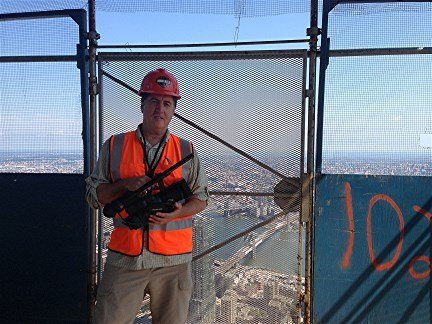

The construction elevator of One World Trade Center in Lower Manhattan is attached to the outside of the 104-story tower. From the ground it looks like a giant zipper, moving slowly up and down as the car, filled with workers and their tools, makes the six-minute, 1,776-foot journey from ground level to the top. (The building’s height was purposefully designed to match our year of independence.)
Riding up in that elevator to the 103rd floor recently, I kept myself a safe distance from the steel gates that protect you but also, unfortunately, allow you to see how high up you are hanging in space. I had to “man up” just to step into the metal box.
Phil English, a shop steward at the tower for LIUNA (Laborers’ International Union of North America), one of several unions that have members working to complete the tower, rode up with me. (See LIUNA World Trade Center videos here.) He laughed when he said he wanted to ride on the window-washing contraption attached to the outside of the top floor.
» Read more about: One World Trade Center: More Than Ground Zero »